
Animal
12:15, 17-Mar-2019
Endangered white-headed langurs enjoying springtime
Updated
15:48, 17-Mar-2019
CGTN
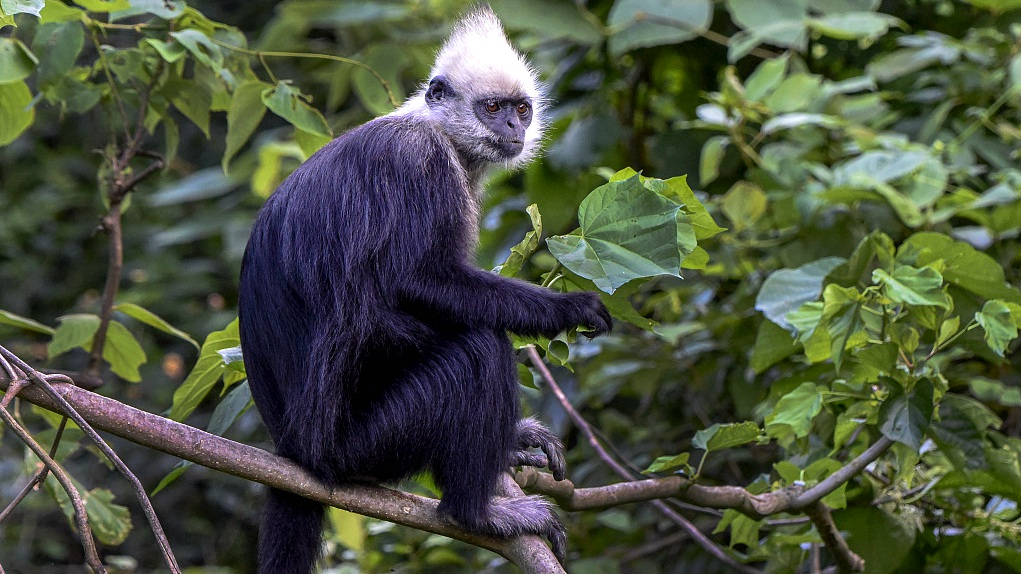
Spring returns and everything revives. The white-headed langurs in Chongzuo National Nature Reserve, located in south China's Guangxi Zhuang Autonomous Region, are also getting active.
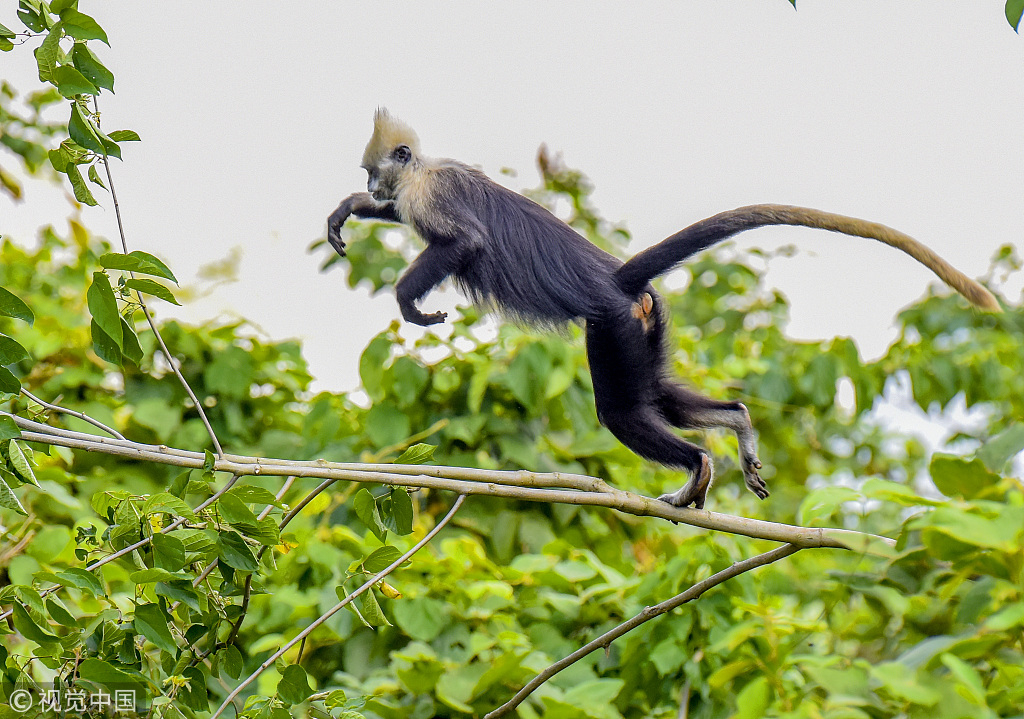
The white-headed langur is very alert and good at jumping. /VCG Photo
The white-headed langur is very alert and good at jumping. /VCG Photo
In this video below, a pack of white-headed langurs, which are classified as a critically endangered species by the International Union for Conservation of Nature (IUCN), are enjoying their springtime in the sun.
00:46

The white-headed langur is one of the 25 most endangered primates in the world and is considered among the rarest monkey species. They need to eat more than 30 kinds of leaves a day, which makes it very difficult to protect their habitat. Before 1980, there were fewer than 300 white-headed langurs left in China.
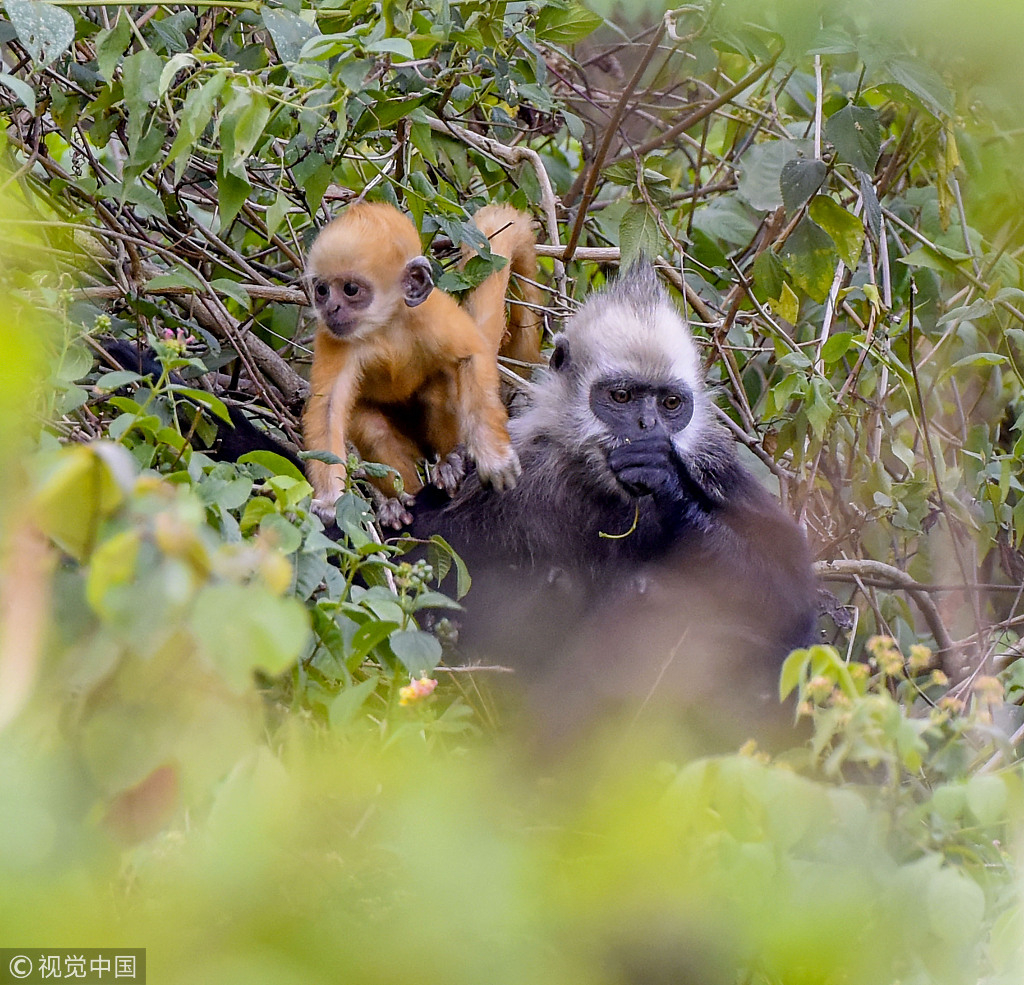
The white-headed langur was born with golden body hair, and after a year, their hair starts to turn gray. / VCG Photo
The white-headed langur was born with golden body hair, and after a year, their hair starts to turn gray. / VCG Photo
In order to "save" the beautiful creature, Chongzuo established an autonomous-region-level nature reserve for the white-headed langur. In 2012, the sanctuary was approved by China's state council as a national nature reserve for the langurs.
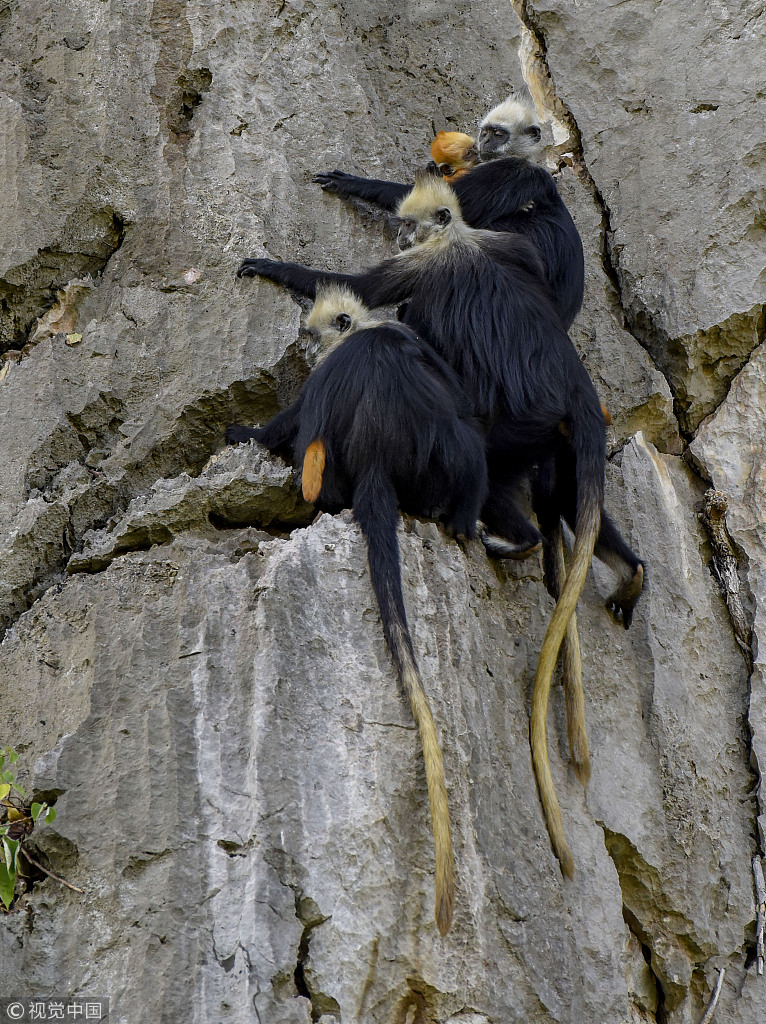
The white-headed langur mainly feeds on leaves. /VCG Photo
The white-headed langur mainly feeds on leaves. /VCG Photo
A series of actions to protect the rare animal has been launched including regular researches, academic exchanges, and scientific popularization activities. Illegal grazing has been regulated, and the patrol on the reserve has been strengthened. Now the population of the white-headed langur has reached to around 1000.
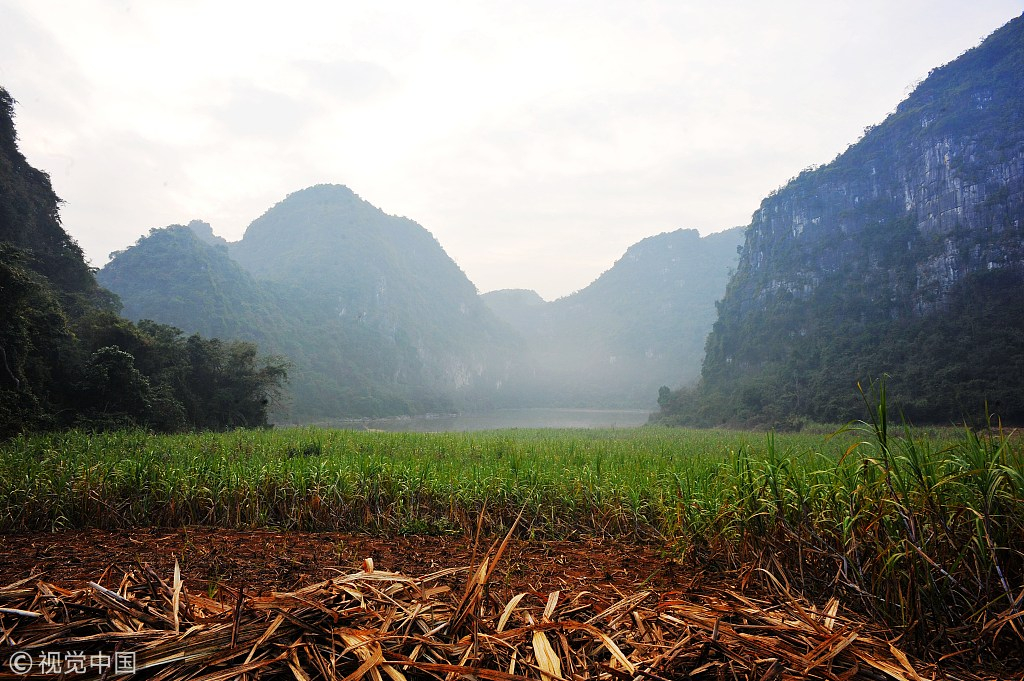
Chongzuo National Nature Reserve. /VCG Photo
Chongzuo National Nature Reserve. /VCG Photo
Chongzuo, with the typical karst topography, continuous stone mountains, steep peaks, cliffs and karst caves everywhere, is the last home of the white-headed langur.
(Top images via VCG)
(If you want to contribute and have specific expertise, please contact us at nature@cgtn.com.)

SITEMAP
Copyright © 2018 CGTN. Beijing ICP prepared NO.16065310-3
Copyright © 2018 CGTN. Beijing ICP prepared NO.16065310-3